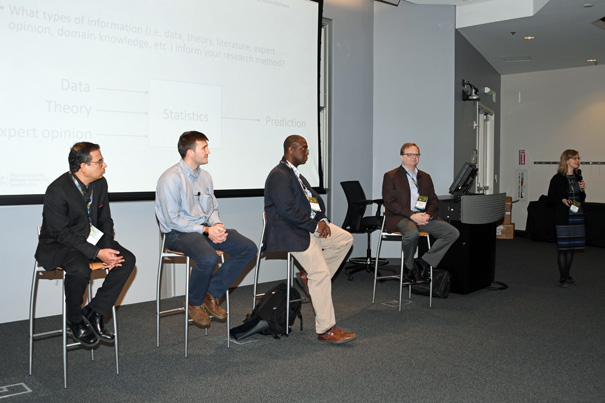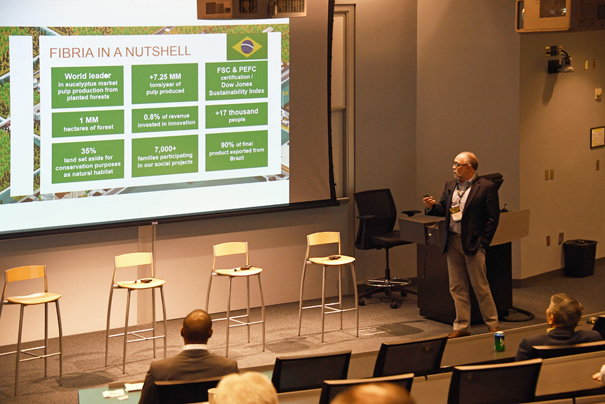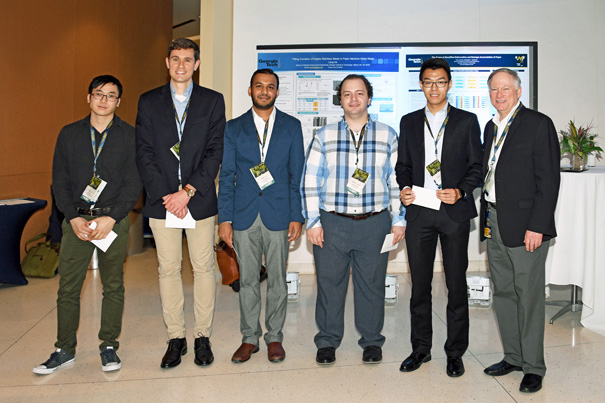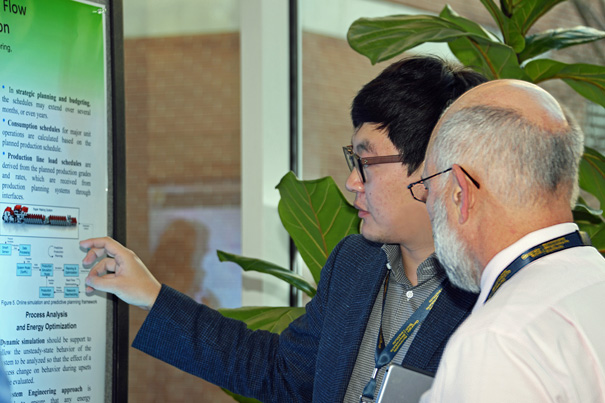RBI Hosts 2018 Executive Conference—Transformative Opportunities for Bioproducts Manufacture
The Renewable Bioproducts Institute at Georgia Tech (Atlanta, Ga., USA) hosted its annual executive conference at the Global Learning Center on its Atlanta campus last week. Titled "Transformative Opportunities for Bioproducts Manufacture," the conference focused on new avenues of advanced manufacturing research that promise solutions to long-standing challenges. Find out more on the
RBI conference website.
Executive Director Norman Marsolan led off the event, noting the enthusiasm from Georgia Tech faculty for such conferences that afford technology discussion with industry. "Our faculty relishes such opportunities to understand the needs and challenges of manufacturing companies, and it helps calibrate their ideas to talk with this audience," Marsolan said. He further observed that the time horizon of research institutions is necessarily longer than that of companies, and pointed out that engagement of companies gives them a look at future possibility as much as it gives faculty a chance to align with their needs. "The opportunity for application of a range of cutting-edge tools to make a major difference is there for development."
In photo above, a faculty panel discussed materials innovation. From left: Rampi Ramprasad, MSE; A.J. Medford, ChBE; Stefan France, Chem; Carson Meredith, ChBE; moderator Martha Grover, ChBE.
Marsolan also offered a reflection on his years at RBI and its predecessor Institute of Paper Science and Technology, as he has announced his retirement (see related article below). He congratulated the RBI community of interest for its progress in deepening industry engagement, development of a two-track graduate education strategy, leverage of the endowed research program, and more.
Fibria Innovations’ COO Mike Rushton was the highlighted speaker, discussing his company’s strategy for expanding its success in developing within the bioeconomy. The goals include profitability through productivity, growth through partnerships, and diversification into new products and businesses that leverage Fibria’s forest resources and industrial units. The company targets sizeable free cash flow from these new non-pulp businesses in the coming years.
"For example, eucalyptus is rich in lignin, and all of the extracted lignin is burned as fuel today," Rushton said. "In a highly efficient mill, there is considerable excess energy which is exported as electric power. By finding higher-value uses for lignin, our mills can unload the recovery furnace, increase pulp production, and create renewable bioproducts."
Fibria Innovations COO Mike Rushton, in photo above, gives a highlight address on the company’s strategy in developing the bioeconomy.
Rushton added that Fibria has defined several technology paths which support its biostrategy—in particular pyrolysis, lignin, and nanocellulose. The way ahead, he said, is about more than just getting the technology right; it will require diversification into new businesses and formation of new partnerships, two strategies already under way at Fibria.
A total of 46 graduate researchers participated in a poster exhibition and contest, at which they were met and encouraged by the company attendance and faculty as well as their peers. Member company representatives served as judges, considering the quality of research, clarity of presentation, and potential future commercial appeal. Winners were Jeffrey Luo, MSE; Nicholas Kruyer, ChBE; Chinmay Satam, ChBE; Bedi Baykal, MSE; and Songcheng Wang, ChBE.
Norman Marsolan,(on right in photo above) congratulates poster contest winners Jeffrey Luo, MSE; Nicholas Kruyer, ChBE; Chinmay Satam, ChBE; Bedi Baykal, MSE; and Songcheng Wang, ChBE.
Dirk Krouskop, president of the industry’s National Council for Air & Stream Improvement, celebrated his association’s upcoming 75th anniversary by revealing NCASI’s new brand and logo. "Our new brand’s three pillars represents Impact, Science, and Solutions," he told the audience. "We welcome your engagement as we enter our next 75 years."
David Turpin gave an update on the Alliance for Pulp and Paper Technology Innovation (APPTI), formerly known as Agenda 2020, citing the strong partnership and support APPTI receives from RBI and Georgia Tech. "RBI is our most significant university partner for our growing portfolio of research—now surpassing $2 million—for breakthrough technology development," he said.
Jungseob So (above), ChBE, details his research to the attentive Peter Hart, WestRock
Steve Usselman, Georgia Tech professor of history and sociology, presented "Innovation Now & Then: Lessons from the Age of Invention" at the conference banquet. He shared strategies for companies undertaking transformations that worked during the tremendous innovation and economic expansion of the early and mid-20th century, allowing smaller companies to thrive among giant enterprises, and that can be applied today.
A series of faculty members offered opportunities in operational excellence (Products, Processes, and Reliability). Two panel discussions addressed Materials and Smart Manufacturing, respectively, for the Advancement of the Paper and Chemicals Industry. Conferees and faculty agreed that small meetings to develop specific applications for advanced tools to current problems would be fruitful. This was seen as a way to bridge the disconnect between theoretical solutions and immediate needs. (See the
conference website for the full program and faculty to contact about these topics.)
The TAPPI Student Chapter also organized a panel discussion for the conferees. It highlighted several collaborative research communities on campus through which RBI Graduate Fellows interact with a cross-section of students and faculty on topics of common interest. One of those discussed is on nanocellulose, and another is on lignin.
TAPPI
http://www.tappi.org/




